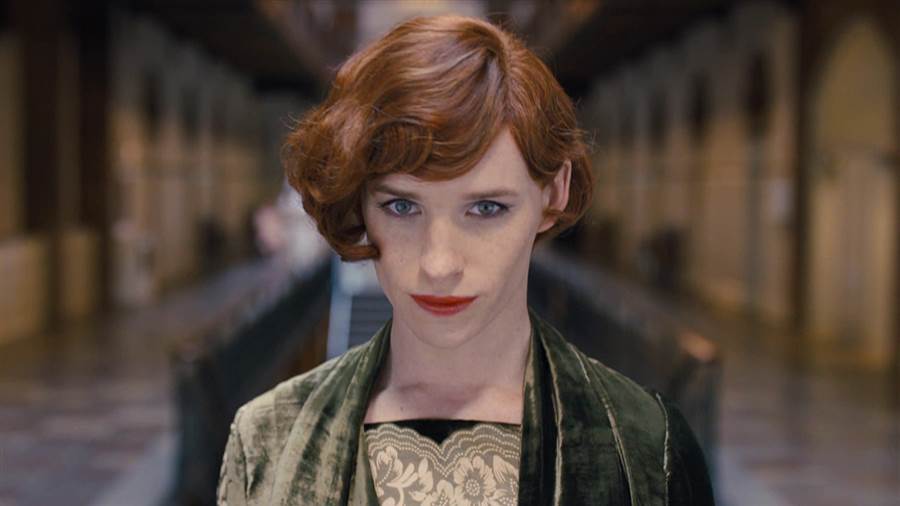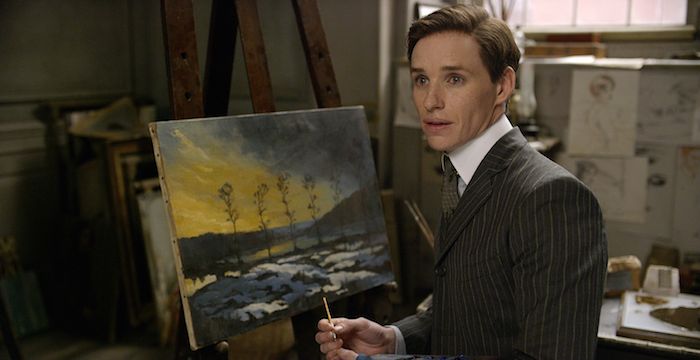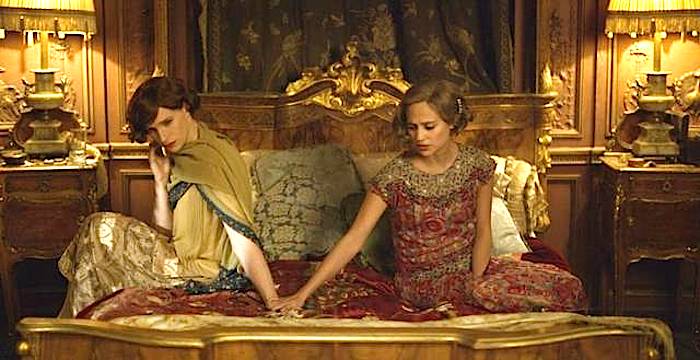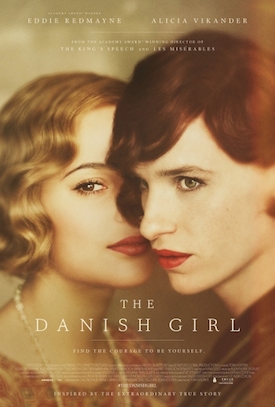 This year’s Oscar nominations for Best Costume Design are especially impressive. Three-time winner Sandy Powell was nominated twice, for her work on Carol and Cinderella. Jacqueline West received her third Oscar nomination for The Revenant. Oscar winner Jenny Beavan received her 1oth nomination for Mad Max: Fury Road. And Spanish costume designer Paco Delgado got his second nomination for working on a Tom Hooper period film (following his 2012 nomination for Les Misérables). For The Danish Girl, set in the 1920s in Copenhagen and Paris, Delgado helped Eddie Redmayne transform from Danish artist Einar Wegener into the woman he believed he was: Lili Elbe. Delgado’s costumes for all of the characters (including Oscar-nominated Alicia Vikander who plays Redmayne’s wife, Gerda Wegener) are gorgeous and add immeasurably to the film. I sat down with Paco Delgado recently at the Beverly Hilton Hotel, just before he was going into a luncheon for all of this year’s Oscar nominees.
This year’s Oscar nominations for Best Costume Design are especially impressive. Three-time winner Sandy Powell was nominated twice, for her work on Carol and Cinderella. Jacqueline West received her third Oscar nomination for The Revenant. Oscar winner Jenny Beavan received her 1oth nomination for Mad Max: Fury Road. And Spanish costume designer Paco Delgado got his second nomination for working on a Tom Hooper period film (following his 2012 nomination for Les Misérables). For The Danish Girl, set in the 1920s in Copenhagen and Paris, Delgado helped Eddie Redmayne transform from Danish artist Einar Wegener into the woman he believed he was: Lili Elbe. Delgado’s costumes for all of the characters (including Oscar-nominated Alicia Vikander who plays Redmayne’s wife, Gerda Wegener) are gorgeous and add immeasurably to the film. I sat down with Paco Delgado recently at the Beverly Hilton Hotel, just before he was going into a luncheon for all of this year’s Oscar nominees.
Danny Miller: Obviously, having the right costumes is important for any film, but for something like this, it seems especially vital — the film just wouldn’t work without the right look for the lead character. Did you feel any extra pressure working on this film?
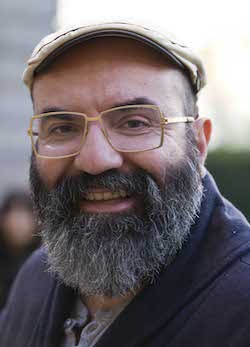 Paco Delgado: To be honest, I really didn’t. People keep saying that to me but I never felt like that at all. I mean, if you’re a serious costume designer, you always think the costumes are vital to the film. After all, no one goes into the street naked — or if they do, they go to jail! I think every time you put clothes on, it’s some kind of statement to the world, even if you dress frivolously or don’t think about what you’re wearing. Dressing is always a statement, and it certainly is for Eddie’s character in this film. You dress to show who you are, but you also dress to hide who you are. You dress to be safe in certain situations, or you dress because you want to be brave. You dress to confront the world, or to hide from the world.
Paco Delgado: To be honest, I really didn’t. People keep saying that to me but I never felt like that at all. I mean, if you’re a serious costume designer, you always think the costumes are vital to the film. After all, no one goes into the street naked — or if they do, they go to jail! I think every time you put clothes on, it’s some kind of statement to the world, even if you dress frivolously or don’t think about what you’re wearing. Dressing is always a statement, and it certainly is for Eddie’s character in this film. You dress to show who you are, but you also dress to hide who you are. You dress to be safe in certain situations, or you dress because you want to be brave. You dress to confront the world, or to hide from the world.
How did you go about creating Lili Elbe’s look for this film?
In the first conversation I had with Tom Hooper, it was clear he had a very clear idea about the role of the costumes in The Danish Girl. When we worked together on Les Misérables, we were creating a very artificial world — the costumes had a certain theatricality to them that they couldn’t have for this film. All of the costumes I design are made to help the actors become the characters they need to be in order to tell a story. That’s what it’s really all about. I love being a costume designer but if people are talking about me in the future when I’m gone, I would love for them to say that Paco Delgado was a good storyteller.
What challenges did you have making sure Eddie Redmayne’s transformation into a woman worked?
Well, as you know, gender is so closely associated with the way that you dress. Lili crossed a boundary — a very dangerous one for her — when she dressed like a woman. Obviously for this film we were very concerned about how to make Eddie look like a proper, believable woman. He has certain features that worked really well for the character but he is still a man with a man’s body. But we were so lucky in that we had the chance to start working with Eddie about a year before production started. We’d meet up between other projects with Eddie and Tom, our makeup artist, and this wonderful woman who helped Eddie with his movements. So by the time we got close to the movie, we knew so much about what colors and fabrics and shapes we wanted to use. It took away a lot of the stress you’d usually have on a movie like this.
I know for some period films there is a slavish devotion to historical accuracy and with others there are certain liberties taken to get the right feel. How was that on this film?
The whole movie takes place in the 1920s. People think that was lucky for us because that decade was very androgynous for women — you didn’t need to have breasts because at that time women kind of flattened their breasts and the dresses were almost rectangular, they didn’t have hips or waists. In a way that was an advantage but at the same time, we were trying to create a woman so you wanted to see a waist. If you look at all of Eddie’s costumes in the film, there’s always something at the waist. For me, it’s very important to do all the research and know your period well, but then when you’re actually designing the dresses, the most important thing is to tell a story.
His clothes as a man are so interesting, too.
Tom always said to me that the main concept of the film is that Lili is trapped in another body. We wanted to have it look like she was imprisoned inside those men’s suits. We took a little creative license for the period in creating those. I decided that Denmark was a little backwards and still in kind of an Edwardian period so that’s what those suits look like, very confining and rigid. And then when they move to Paris, there’s a kind of explosion. Remember, too, that Lili is inventing herself as a woman so she’s probably inventing her fashions as well, it’s not just about what was “in style” at the time. But that’s always the case, even in real life. It’s not like Karl Lagerfeld comes up with some crazy men’s fashions and you and I are going to start wearing it right away. At the end of the day, people wear what they like and what makes them feel safe. The fashion world can be a little bit like a dictatorship and very few people really adhere completely to the dictates of a certain period.
Your vision of the clothes of the 1920s was so gorgeous but not always what I had in my head for that time period. Is that partly because of the Danish influence?
Yes, I wanted a Danish feeling, especially in the beginning. We did a lot of research in Copenhagen and, of course, the weather is also a big factor. The clothes in 1920s Alaska, for example, are going to be extremely different from the clothes in 1920s Los Angeles! I also look at how the light of different places affect colors. I’m originally from the Canary Islands and I’m always amazed at how different the colors look when I go back home to visit my mom. Even the flowers are so much more vivid because you are closer to the equator and the sun is more powerful and the atmosphere is cleaner — the colors almost seem florescent! When you travel to the north, you see a lot more pastels. The light is filtered so differently. You have to take all of these things into account, plus the fact that these characters were artists, which is very different from people who are bankers or in other professions. You have to put all of these ingredients into your cocktail shaker when you’re designing costumes.
As a costume designer, do you feel pressure yourself about what you choose to wear in public? I know that Sandy Powell has become well known for the unique gowns she wears to the Oscars.
I don’t feel too much pressure. You see how I’m dressed right now for this Oscar luncheon that I’m going to. It’s really a kind of an impersonation for me. Normally, I just wear jeans and a t-shirt. Remember I work with dyes and all sorts of materials that can get me pretty dirty on most days. Most of the movies I work on, like Les Misérables, involve an awful lot of dirt — The Danish Girl is one of the first ones where people stay clean all of the time! But it’s fun to dress up every now and then, I’ll definitely wear a tux to the Oscars.
With the level of filth in Les Misérables, I’m sure you had to have multiple copies of every single costume. How was that with this film?
We didn’t have anywhere near that kind of budget for The Danish Girl so that was a challenge. For example, there’s that scene where Lili goes to the ball and gets a nosebleed. In a normal situation, we’d probably have at least six of those dresses made but we couldn’t afford that here. I decided to make a few versions of the top of the dress with a panel in the middle so that we could change out the panel very quickly after she bleeds. It worked out well but there are always challenges on a movie — believe me, I could write a book about some of the disasters that happen on set involving costumes. You just make it work!
It’s really amazing what you accomplished in this film. It’s such a fascinating look at an early transgendered person.
People think it’s so different today but in some ways it isn’t. You know there are so many boys and girls all over the world right now who are going through the same difficult process that Lili went through. The first stages of this are so hard even if you have the most open-minded parents and live in a society that is less restrictive. Think about all the problems you already have when you’re young in terms of self-acceptance — imagine what that would be like if you also felt you were in the wrong body. I remember when I first realized I was gay — that was a very hard process to go through but that was nothing compared to the pain transgendered people must feel.
Well, I know you have to go into your lunch for the Oscar nominees. Have a great time and good luck on Sunday!
Thank you! Events like this lunch are the best part. When you go to the actual awards everyone is so nervous and tense. Here, you can just mingle and relax. “Oh, I love your movie! Oh, you look so wonderful!”

